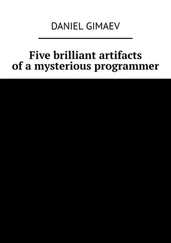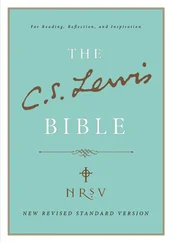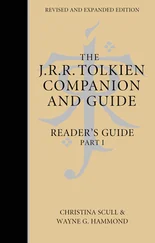Standard Template Library Programmer's Guide
Здесь есть возможность читать онлайн «Standard Template Library Programmer's Guide» весь текст электронной книги совершенно бесплатно (целиком полную версию без сокращений). В некоторых случаях можно слушать аудио, скачать через торрент в формате fb2 и присутствует краткое содержание. Жанр: Программирование, Справочники, на английском языке. Описание произведения, (предисловие) а так же отзывы посетителей доступны на портале библиотеки ЛибКат.
- Название:Standard Template Library Programmer's Guide
- Автор:
- Жанр:
- Год:неизвестен
- ISBN:нет данных
- Рейтинг книги:4 / 5. Голосов: 1
-
Избранное:Добавить в избранное
- Отзывы:
-
Ваша оценка:
- 80
- 1
- 2
- 3
- 4
- 5
Standard Template Library Programmer's Guide: краткое содержание, описание и аннотация
Предлагаем к чтению аннотацию, описание, краткое содержание или предисловие (зависит от того, что написал сам автор книги «Standard Template Library Programmer's Guide»). Если вы не нашли необходимую информацию о книге — напишите в комментариях, мы постараемся отыскать её.
Standard Template Library Programmer's Guide — читать онлайн бесплатно полную книгу (весь текст) целиком
Ниже представлен текст книги, разбитый по страницам. Система сохранения места последней прочитанной страницы, позволяет с удобством читать онлайн бесплатно книгу «Standard Template Library Programmer's Guide», без необходимости каждый раз заново искать на чём Вы остановились. Поставьте закладку, и сможете в любой момент перейти на страницу, на которой закончили чтение.
Интервал:
Закладка:
Copyright © 1995 Dr. Dobb's Journal
Frequently Asked Questionsabout the SGI Standard Template Library
Is the STL Y2K compliant?
Yes. The STL does not store or manipulate dates in any way, so there are no year 2000 issues.
Can I download this entire site for offline viewing?
Yes. From the home page, go to the Download the STLpage. You will find links for downloading the entire STL documentation as a single zip, tar, or tar.gz file.
The documentation is a collection of HTML files. It does not exist in the form of a single text or PostScript TMdocument. The Other Resources page lists several books about the STL.
Which compilers are supported?
The STL has been tested on these compilers: SGI 7.1 and later, or 7.0 with the -n32 or -64 flag; gcc 2.8 or egcs 1.x; Microsoft 5.0 and later. (But see below.) Boris Fomitchev distributes a portfor some other compilers.
If you succeed in using the SGI STL with some other compiler, please let us know, and please tell us what modifications (if any) you had to make. We expect that most of the changes will be restricted to the header.
What about older SGI compilers?
Given the rate of improvement in C++ implementations, SGI strongly recommends that you upgrade your compiler. If this is not possible, you might try the version of the STL for older Borland and Microsoft compilers (see the Download the STLpage), or Boris Fomitchev's port. Neither of these is supported.
How do I install the SGI STL?
You should unpack the STL include files in a new directory, and then use the -I (or /I) option to direct the compiler to look there first. We don't recommend overwriting the vendor's include files.
At present the SGI STL consists entirely of header files. You don't have to build or link in any additional runtime libraries.
Are there any compatibility issues with Visual C++?
Visual C++ provides its own STL implementation, and some of the other Microsoft C++ library headers may rely on that implementation. In particular, the SGI STL has not been tested in combination with Microsoft's new header. It has been used successfully with the older header.
Is the SGI STL thread safe?
Yes. However, you should be aware that not everyone uses the phrase "thread safe" the same way. See our discussion of thread safety for our design goals.
Are hash tables part of the C++ standard?
No. The hash table classes (hash_set, hash_map hash_multiset hash_multimap hash) are an extension. They may be added to a future revision of the C++ standard.
The rope and slist classes are also extensions.
Why is list<>::size() linear time?
The size() member function, for list and slist, takes time proportional to the number of elements in the list. This was a deliberate tradeoff. The only way to get a constant-time size() for linked lists would be to maintain an extra member variable containing the list's size. This would require taking extra time to update that variable (it would make splice() a linear time operation, for example), and it would also make the list larger. Many list algorithms don't require that extra word (algorithms that do require it might do better with vectors than with lists), and, when it is necessary to maintain an explicit size count, it's something that users can do themselves.
This choice is permitted by the C++ standard. The standard says that size() "should" be constant time, and "should" does not mean the same thing as "shall". This is the officially recommended ISO wording for saying that an implementation is supposed to do something unless there is a good reason not to.
One implication of linear time size(): you should never write
if (L.size() == 0)
…
Instead, you should write
if (L.empty())
…
Why doesn't map's operator< use the map's comparison function?
A map has a notion of comparison, since one of its template parameters is a comparison function. However, operator< for maps uses the elements' operator< rather than that comparison function. This appears odd, but it is deliberate and we believe that it is correct.
At the most trivial level, this isn't a bug in our implementation because it's what's mandated by the C++ standard. (The behavior of operator< is described in Table 65, in section 23.1.)
A more interesting question: is the requirement in the standard correct, or is there actually a bug in the standard?
We believe that the requirements in the standard are correct.
First, there's a consistency argument: operator< for a vector (or deque, or list) uses the element's operator<. Should map's operator< do something else, just because there is another plausible way to compare objects? It's reasonable to say, for all containers, that operator< always means operator<, and that if you need a different kind of comparison you can explicitly use lexicographical_compare.
Second, if we did use the map's comparison function, there would be a problem: which one do we use? There are two map arguments, and, while we know that their comparison functions have the same type, we don't know that they have the same behavior. The comparison function, after all, is a function object, and it might have internal state that affects the comparison. (You might have a function object to compare strings, for example, with a boolean flag that determines whether the comparison is case-sensitive.)
There's also a related question, incidentally: how should operator== behave for sets? A set's comparison function induces an equivalence relation, so, just as you can use the set's comparison function for lexicographical ordering, you could also use it for a version of equality. Again, though, we define operator==(const set&, const set&) so that it just calls the elements' operator==.
Why does a vector expand its storage by a factor of two when it performs a reallocation?
Expanding a vector by a factor of two is a time-space tradeoff; it means that each element will (on average) be copied twice when you're building a vector one element at a time, and that the ratio of wasted to used space is at most 1. (In general, if the exponent for expansion is r, the worst case wasted/used ratio is r - 1 and the number of times an element is copied approaches r/(r - 1). If r = 1.25, for example, then elements are copied five times instead of twice.)
If you need to control vector's memory usage more finely, you can use the member functions capacity() and reserve() instead of relying on automatic reallocation.
Why do the pop member functions return void?
All of the STL's pop member functions (pop_back in vector, list, and deque; pop_front in list, slist, and deque; pop in stack, queue, and priority_queue) return void, rather than returning the element that was removed. This is for the sake of efficiency.
If the pop member functions were to return the element that was removed then they would have to return it by value rather than by reference. (The element is being removed, so there wouldn't be anything for a reference to point to.) Return by value, however, would be inefficient; it would involve at least one unnecessary copy constructor invocation. The pop member functions return nothing because it is impossible for them to return a value in a way that is both correct and efficient.
Читать дальшеИнтервал:
Закладка:
Похожие книги на «Standard Template Library Programmer's Guide»
Представляем Вашему вниманию похожие книги на «Standard Template Library Programmer's Guide» списком для выбора. Мы отобрали схожую по названию и смыслу литературу в надежде предоставить читателям больше вариантов отыскать новые, интересные, ещё непрочитанные произведения.
Обсуждение, отзывы о книге «Standard Template Library Programmer's Guide» и просто собственные мнения читателей. Оставьте ваши комментарии, напишите, что Вы думаете о произведении, его смысле или главных героях. Укажите что конкретно понравилось, а что нет, и почему Вы так считаете.











